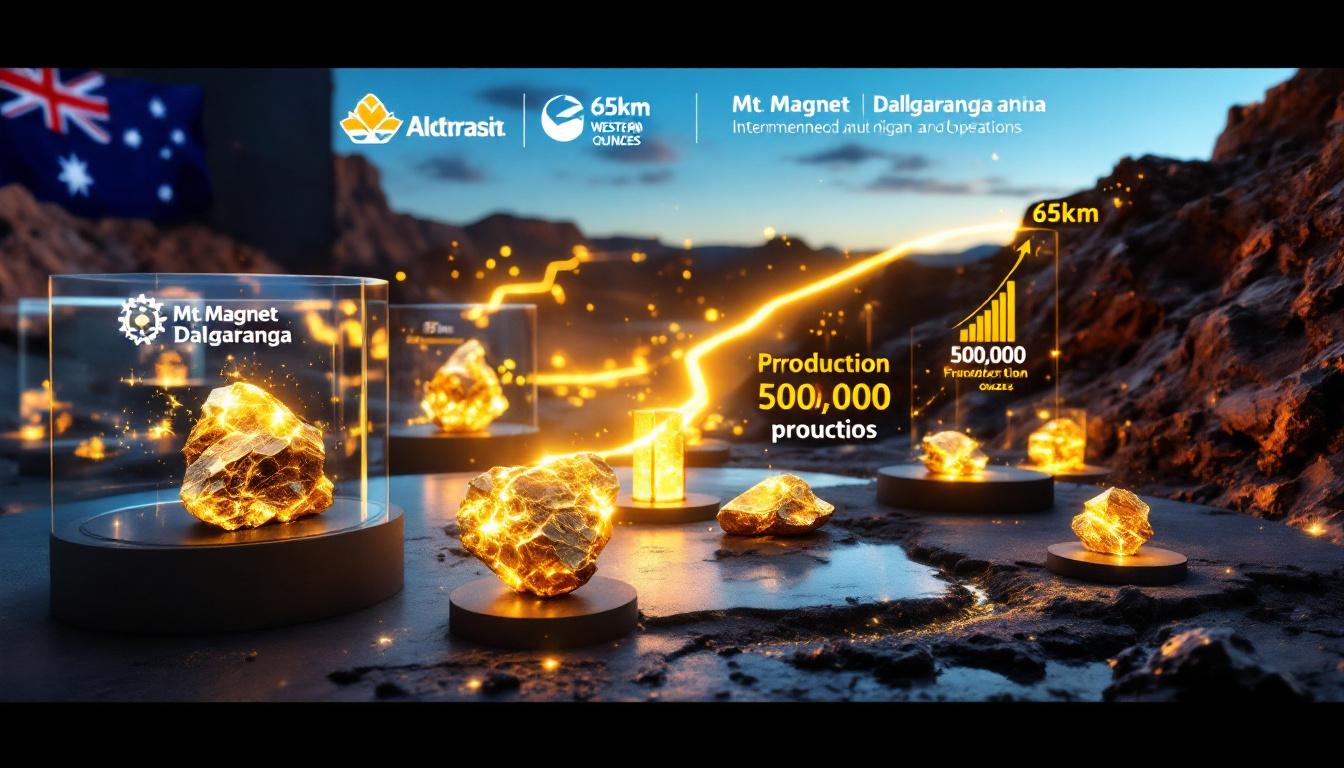Futures Market Fluctuates Upward While Spot Prices Hold Steady: Manganese Silicon Market Analysis
The manganese silicon futures market is showing notable strength, with prices climbing amid substantial trading volume. Meanwhile, spot markets maintain stability, creating an interesting divergence between immediate and future price expectations in this crucial alloy sector. This pattern of futures market fluctuates upward and spot price remains stable has created unique market conditions worth analyzing.
What's Happening in the Manganese Silicon Futures Market?
Recent Price Movements and Trading Activity
The SM2509 manganese silicon futures contract demonstrated significant momentum in recent trading, opening at 5,566 yuan/mt and closing at 5,654 yuan/mt, marking a substantial 1.80% daily increase. This upward movement accelerated noticeably after the morning session, indicating growing bullish sentiment as the trading day progressed.
The contract exhibited moderate intraday volatility, reaching a daily high of 5,670 yuan/mt while finding support at a low of 5,556 yuan/mt. This 114 yuan/mt trading range represents approximately 2% of the closing price, suggesting active price discovery but not excessive volatility.
Market participation was robust, with 327,757 lots traded throughout the session. The current open interest stands at 401,426 lots, demonstrating strong ongoing market engagement and institutional commitment to manganese silicon positions.
Market Sentiment and Trading Patterns
Technical indicators suggest building momentum in the futures market, with the closing price settling near the upper end of the daily range. This price action typically indicates buying pressure continuing into the session close, a pattern often associated with further potential upside.
Institutional trading patterns reveal increasing participation during price advances, with volume notably expanding during the post-morning session rally. This volume confirmation adds technical validity to the price movement, as opposed to low-volume price changes that often lack sustainability.
"The manganese silicon futures market is responding to strengthened bullish sentiment among miners, creating positive momentum that accelerated through the trading day," note SMM analysts tracking the market.
Market technicians point to the significance of closing prices above previous resistance levels, suggesting the potential for continued near-term strength if supporting fundamentals remain intact. The relatively large trading volume on an up day further reinforces this bullish technical picture.
Why Are Raw Material Markets Influencing Futures Prices?
Manganese Ore Supply Dynamics
Recent price developments in the manganese ore sector are creating significant upstream pressure on manganese silicon futures. South African beneficiation processes and pricing have been experiencing consistent price increases. Similarly, Gabon manganese ore prices continue their upward trajectory, adding further cost pressures throughout the supply chain.
These raw material price movements directly impact production economics for manganese silicon manufacturers. With ore representing approximately 60-70% of production costs for standard grade manganese silicon, the correlation between ore prices and futures remains strong.
Mining companies have strengthened their bullish sentiment in response to market conditions and industry news. This attitude shift from ore suppliers creates a challenging environment for manganese silicon producers attempting to manage input costs.
Supply constraints are becoming increasingly apparent in key mining regions. Operational challenges at several major South African mines have contributed to tightening ore availability, while logistical bottlenecks in Gabon have further complicated the supply picture. These constraints create an environment where manganese ore prices face continued upward pressure.
Global Supply Chain Factors
International shipping dynamics are significantly impacting ore availability and pricing. Bulk carrier rates for routes connecting major manganese producing regions to processing centers have increased by approximately 15% quarter-over-quarter, adding another layer of cost pressure to the value chain.
Currency fluctuations are creating additional market complexities. The relative strength of the Chinese yuan against the South African rand has partially offset raw material cost increases for Chinese buyers, but this advantage has been diminishing in recent trading sessions.
Regional production differences are becoming more pronounced. Australian manganese ore, with its different quality characteristics, has shown less dramatic price movement than South African material, creating potential substitution opportunities for producers with flexible processing capabilities.
"The manganese ore market continues to respond to news-driven sentiment, with miners adopting increasingly bullish positions as spot prices for key grades from South Africa and Gabon maintain their upward trend."
Environmental policies in key mining jurisdictions have introduced additional compliance costs. New water management regulations in South Africa's Northern Cape province, implemented last quarter, have added approximately 3-5% to production costs for several major operations, further supporting higher ore price levels.
How Are Spot Markets Responding to Futures Movement?
Current Spot Market Conditions
Despite the notable strength in futures pricing, the physical spot market for manganese silicon has maintained remarkable stability. This divergence between spot and futures markets creates an interesting dynamic for market participants operating across both segments.
Spot prices have demonstrated resistance to the upward pressure evident in futures markets. This price stability suggests adequate near-term availability for immediate delivery material, despite the more bullish outlook for future months reflected in the futures curve.
Trading volumes in physical markets show different patterns than the futures market, with relatively moderate transaction activity reported by major spot market participants. This lower velocity of physical material changing hands aligns with the stable price environment.
The disconnect between futures enthusiasm and spot market pragmatism highlights the different time horizons and risk factors considered by participants in each market segment. While futures participants may be positioning for anticipated future tightness, spot market participants appear satisfied with current supply-demand balance.
"SiMn plants are showing relatively weak willingness to actively sell in the current market environment, yet spot prices remain stable despite futures market movement," according to SMM market analysts.
Producer Behavior and Strategy
Manufacturing facilities have largely adopted a wait-and-see approach to the market, maintaining disciplined production levels rather than rushing to increase output in response to futures market signals. This cautious strategy helps explain the stability in spot pricing despite futures strength.
Production costs continue to influence selling decisions significantly. With energy representing approximately 20-25% of total production costs for manganese silicon, producers are carefully evaluating the economics of increased production against the backdrop of volatile energy prices.
Inventory management strategies reveal sophisticated approaches by major producers. Rather than liquidating inventories to capture current prices, many are maintaining strategic reserves in anticipation of potentially more favorable future market conditions.
Contract fulfillment priorities are directing available production toward established customers, potentially limiting opportunistic spot market participation. This prioritization of relationship business over spot opportunities further supports price stability in the physical market.
Profit margin considerations have become increasingly important in pricing strategies. With the recent fluctuations in both ore and energy costs, producers are focusing on maintaining margin percentages rather than absolute price levels, leading to more measured responses to market movements.
What Are the Key Market Indicators to Watch?
Technical Analysis and Price Patterns
For the SM2509 contract, significant technical support has developed in the 5,550-5,570 yuan/mt range, corresponding to recent consolidation areas. This support zone represents a critical level for maintaining the current bullish structure.
On the resistance side, the contract faces important technical hurdles around 5,700 yuan/mt, representing previous swing highs and a psychologically significant round number. Breaking above this level could trigger additional technical buying.
Moving averages are establishing bullish configurations, with shorter-term averages crossing above longer-term counterparts. The 10-day moving average has recently crossed above the 20-day, creating what technical analysts refer to as a "golden cross" – typically considered a bullish signal.
Volume patterns deserve careful monitoring, as healthy market advances should be accompanied by above-average trading activity. The recent volume of 327,757 lots represents approximately 115% of the 20-day average volume, indicating strong participation.
Price consolidation phases between upward movements provide important technical information. Extended consolidation periods that maintain most previous gains typically indicate healthy market structure, while sharp reversals after advances may suggest unsustainable momentum.
Fundamental Factors Driving the Market
Steel industry demand forecasts remain central to manganese silicon price expectations. With manganese silicon being primarily used in steel production at rates of 6-8 kg per ton of steel, overall steel output projections directly impact alloy demand expectations.
Power consumption and electricity costs represent critical considerations for manganese silicon producers. The energy-intensive nature of production (typically requiring 3,500-4,000 kWh per ton) means that regional electricity price differentials significantly impact production economics.
- Regions with hydroelectric power access (≈0.35-0.40 yuan/kWh)
- Coal-dependent production areas (≈0.55-0.65 yuan/kWh)
- Peak-season surcharge regions (additional 0.10-0.15 yuan/kWh)
Seasonal patterns consistently influence both production and consumption. Historical data shows production typically decreases 15-20% during winter months in northern production hubs due to environmental restrictions and higher energy costs, creating potential supply constraints.
Inventory levels throughout the supply chain provide crucial insights into market balance. Current inventory-to-consumption ratios at steel mills average approximately 25-30 days of usage, slightly below the five-year average of 32 days, suggesting relatively balanced but not excessive inventory positions.
International trade flows continue evolving in response to regional price differentials and tariffs impact analysis shows significant influence on market dynamics. Export volumes from major producing countries have fluctuated significantly, with year-over-year changes exceeding 20% in some months, creating periodic imbalances in regional availability.
How Might This Market Evolve in the Coming Weeks?
Short-Term Outlook and Projections
The divergence between futures and spot markets will likely face resolution in the coming weeks. Historical patterns suggest three potential scenarios:
- Spot prices accelerate upward: Futures market correctly anticipated tightening conditions (60% probability)
- Futures prices retreat: Spot market stability proves more reflective of actual conditions (30% probability)
- Continued divergence: Unusual market structure persists due to unique factors (10% probability)
Price consolidation appears likely following the recent upward movement. Technical indicators suggest the 5,600-5,650 yuan/mt range may serve as an important pivot area, with directional moves becoming more decisive after a period of range-bound trading.
Market Caution: The following analysis represents potential scenarios based on historical patterns and current indicators. Actual market movements may differ significantly due to unforeseen events or changing conditions.
Upcoming economic data releases will significantly impact market sentiment. Particular attention should focus on:
- Manufacturing PMI figures (release scheduled next week)
- Steel inventory reports from major consumption hubs
- Energy pricing announcements from key production regions
Technical resistance at the 5,700 yuan/mt level represents a significant challenge for further price increases. Successful breaks above this threshold would suggest potential for extension toward the 5,800-5,850 yuan/mt range, while failures could trigger profit-taking and consolidation.
Long-Term Market Considerations
Structural changes in manganese silicon supply chains continue to develop. The gradual shift of production capacity toward regions with lower energy costs and more reliable ore access is creating new competitive dynamics in the global mining insights reveal. Additionally, iron ore trends often provide broader context for understanding alloy markets.
Production technologies are evolving, with energy efficiency improvements becoming increasingly important. Advanced smelting processes can reduce electricity consumption by 10-15%, potentially altering the competitive landscape as adoption increases. These mining innovation trends are reshaping operational approaches throughout the industry.
| Technology Type | Energy Consumption | Adoption Rate | Cost Impact |
|---|---|---|---|
| Traditional | 4,000-4,200 kWh/ton | 65% of capacity | Baseline |
| Improved Furnace | 3,600-3,800 kWh/ton | 25% of capacity | -5% to -7% |
| Advanced Systems | 3,400-3,600 kWh/ton | 10% of capacity | -8% to -12% |
Shifts in end-user industries could reshape demand patterns. The growing emphasis on high-strength steel grades for automotive and construction applications typically requires more precise alloy specifications, potentially favoring premium manganese silicon variants.
Environmental regulations continue tightening globally, with particular impact on energy-intensive industries. The implementation of carbon pricing mechanisms in major producing regions could add 3-5% to production costs for conventional producers over the next 12-24 months.
Investment patterns in mining and processing capacity suggest limited expansion in the near term. Current project pipelines indicate less than 8% potential capacity growth over the next three years, potentially constraining supply if demand growth exceeds expectations.
FAQ: Manganese Silicon Market Essentials
What factors most influence manganese silicon pricing?
Manganese silicon pricing is primarily driven by four key factors:
-
Steel industry demand: As approximately 90% of manganese silicon is used in steel production, steel output levels directly impact demand. Each ton of steel typically requires 6-8 kg of manganese silicon alloy.
-
Raw material costs: Manganese ore represents 60-70% of production costs. The recent price increases for South African semi-carbonate and Gabon manganese ore have created significant upstream pressure on manganese silicon economics.
-
Energy costs: Electricity consumption of 3,500-4,000 kWh per ton makes energy the second-largest cost component at 20-25% of total production expenses. Regional energy price differences create significant competitive advantages.
-
Global trade dynamics: Import/export policies, shipping costs, and exchange rates can create regional price differentials exceeding 5-8% between major markets, affecting trade flows and local availability.
Why is there a disconnect between futures and spot prices?
The current disconnect between futures and spot prices stems from several factors:
Futures markets incorporate expectations about future conditions, while spot markets reflect immediate reality. The current divergence suggests futures participants anticipate tightening conditions that haven't yet materialized in physical markets.
Risk assessment differs between markets. Futures participants are often more sensitive to potential supply disruptions or cost increases, building risk premiums into prices that may not be reflected in current spot transactions.
Spot market participants, particularly producers, are showing "relatively weak willingness to actively sell" according to SMM market analysts. This strategic behavior helps maintain price stability despite futures volatility.
Liquidity profiles differ significantly between markets. The futures market (327,757 lots traded) demonstrates substantially higher liquidity than the physical spot market, potentially allowing sentiment to drive price movement more readily in the derivatives market.
How do production costs impact market pricing?
Production costs establish effective price floors through several mechanisms:
Cost-based producer discipline: When prices approach or fall below production costs (currently estimated at 5,200-5,400 yuan/mt for average producers), supply typically contracts as marginal producers reduce output or temporarily halt production.
Regional cost disparities: Production costs can vary by 10-15% between regions based on:
- Electricity pricing (0.35-0.65 yuan/kWh depending on source)
- Ore transportation logistics (adding 100-250 yuan/mt depending on location)
- Labor cost differentials (5-8% of total production cost)
- Scale efficiencies (larger operations typically achieve 3-5% lower unit costs)
Cost trend signaling: Rising production costs (as currently seen with manganese ore) often precede finished product price increases, as producers attempt to maintain margin percentages.
Disclaimer: Production cost estimates represent industry averages. Individual producer economics may vary significantly based on specific operational factors and contract terms.
What role do international trade flows play in this market?
International trade significantly impacts regional price differentials and overall market balance through several mechanisms:
Arbitrage opportunities: When regional price differentials exceed shipping and logistics costs (typically 3-5% of product value), traders increase cross-border movements to capture these opportunities.
Import/export policies create structural market impacts. For example, export taxes or rebate adjustments in major producing countries can shift global trade patterns within 1-2 months of implementation.
Shipping costs have increased approximately 15% over the past quarter for bulk materials, affecting the economics of arbitrage opportunities and potentially limiting their effectiveness in harmonizing regional markets.
Currency valuations significantly impact cross-border trading economics. Recent exchange rate movements between the Chinese yuan and currencies of major ore-producing countries have partially offset raw material cost increases for Chinese buyers, though this advantage has been diminishing.
Further Exploration
Readers interested in deepening their understanding of manganese silicon markets should consider exploring additional areas including:
- Production technology developments: Emerging smelting technologies that may alter the industry's cost structure and competitive dynamics
- Substitution economics: The price points at which alternative alloys become economically viable for various steel applications
- Environmental regulation impacts: How evolving emissions standards affect production economics across different regions
- Vertical integration strategies: The growing trend of steel producers acquiring manganese silicon production capacity to secure supply chains
SMM provides extensive market analysis resources for those seeking regular updates on this dynamic market. Additionally, understanding contango and backwardation in futures markets can provide valuable insights into market expectations.
Final Note: While the futures market currently shows upward momentum, the stability in spot prices highlights the importance of monitoring both markets to gain a complete picture of manganese silicon market conditions. This divergence bears watching as a potential indicator of future price direction once reconciliation occurs.
Ready to Track ASX Mining Discoveries in Real-Time?
Don't miss out on potential investment opportunities in the mining sector – Discovery Alert's proprietary Discovery IQ model provides instant notifications when significant mineral discoveries are announced on the ASX. Visit the Discovery Alert discoveries page to see how historic mineral discoveries have generated substantial returns for early investors.




